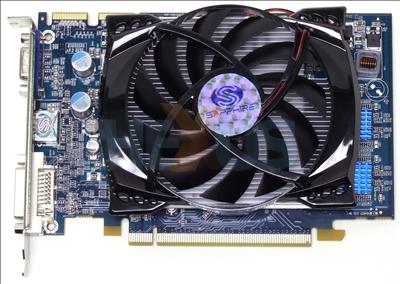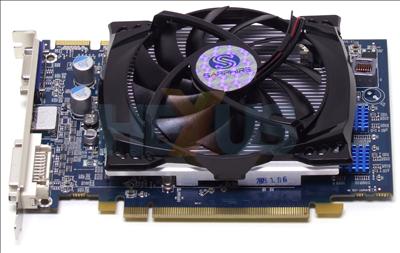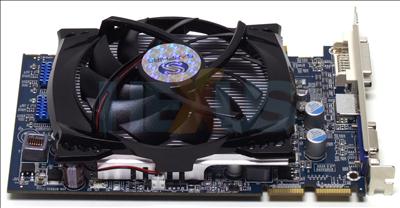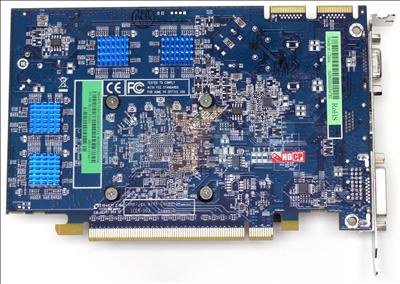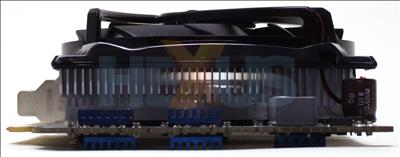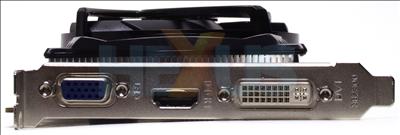Sapphire Radeon HD 4670 512MB GDDR4
Now, how to differentiate the next GPU up on the ladder, the Radeon HD 4670?For a start, it ships with the same underlying architecture as the HD 4650, but is clocked in at faster speeds of 750MHz core/shader, and 2,000MHz memory, made possible by the use of higher-speed GDDR3, although cards equipped with a 1GB frame-buffer usually ship with memory operating at 1,600MHz - you gain space but lose speed.
Radeon HD 4670 cards start at around the £65 mark and rise to almost £80 for custom-designed models, of which this is very much one.
Why? Just take a look at the cooler. Sapphire junks the reference cooler, which wasn't all that loud it has to be said, and replaces it with a larger-diameter model that, Sapphire says, keeps the noise level below 20 decibels.
It is indeed very, very quiet under all conditions and will suit folk who put a relative lack of noise high on the list of criterion. It's not silent, obviously, and that would be the next step in ensuring zero-noise cooling. Sapphire has such a card now, dubbed ULTIMATE.
The big cooler does have the undesirable side-effect of taking up a slot adjacent to the main PCIe x16's, so it may not fit into teeny-weeny chassis as single-slot-taking cards do.
What's disappointing is that Sapphire has kept the core/shader speed at a default 750MHz, and we'd have hoped it to be raised to, say, 775MHz in light of the beefier cooling.
Coming back to the name of the card, Sapphire Radeon HD 4670 512MB GDDR4, another obvious difference is in the use of a higher-speed memory standard - GDDR4 vs. GDDR3 - and Sapphire takes advantage by clocking it at 2,200MHz, compared to 2.000MHz GDDR3 for most other 512MB-equipped cards.
Sensible supposition indicates that this is the same memory left over from the production of Radeon HD 3870 512MB cards, which, if you remember, also used GDDR4, rated to 2,250MHz.
We can't discern the memory chips' speed due to the heatspreaders on them, again with four on each side, but this time the CrossFire fingers are present, indicating that you can team the card up with up to three others for some four-way action, but we'd recommend keeping it at two for the best scaling gains.
The front shows the aluminium heatsink, finned, and the chunky cooler sitting on top. Again, there is no need for auxillary power here, either.
And the rear is just the same as the Sapphire Radeon HD 4650 GDDR3's, that is, D-Sub, HDMI (7.1-channel, too), and dual-link DVI - kind of as it should be on most cards these days.
Summary
Differentiated from the norm by the use of an extra-large cooler, faster-than-normal memory, and HDMI port on the back, Sapphire's GDDR4-equipped card should cost around £76, which is some £11 more-expensive than the cheapest, generic model.



